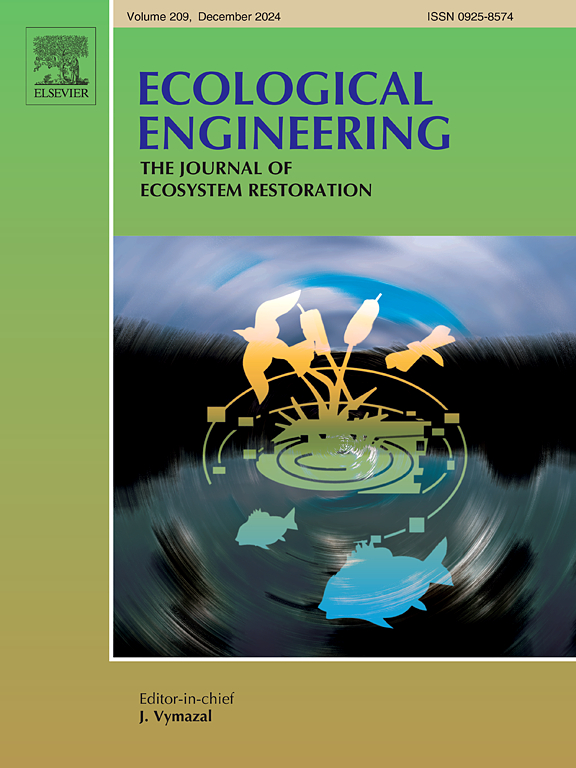在德国莱比锡研究绿色屋顶
IF 4.1
2区 环境科学与生态学
Q1 ECOLOGY
引用次数: 0
摘要
由于气候变化的加剧,城市面临着适应新的天气条件的挑战,包括暴雨和干旱时期。绿色屋顶被认为是可持续城市发展的一个很有前途的解决方案,因为它们不需要额外的空间,而且有望提供多种功能。这些包括雨水保留和储存,冷却效果,为人类和动物提供额外的空间,以及作为城市污染物的汇。为了验证这些功能,在莱比锡Helmholtz环境研究中心校园的一栋建筑上建造了一个研究绿色屋顶。研究绿色屋顶由四个80平方米的屋顶组成:广泛和半密集的绿色屋顶,湿地绿色屋顶和砾石屋顶作为参考。每个部分都配备了许多传感器来监测水和热平衡。此外,还安装了植物和昆虫学监测设备。屋顶部分是几个工作组跨学科研究的主题。本出版物介绍了研究基础设施,并提供了正在进行的研究的概述。本文章由计算机程序翻译,如有差异,请以英文原文为准。

Research green roof in Leipzig, Germany
Due to the progressing climate change, cities face the challenge of adapting to new weather conditions, including heavy rains and draught periods. Green roofs are considered a promising solution for sustainable urban development, as they require no additional space and are expected to offer multiple functions. These include rainwater retention and storage, cooling effects, provision of additional space for humans and animals, and functioning as sink for urban pollutants. To validate these functions, a Research Green Roof was constructed on a building at the Helmholtz Centre for Environmental Research campus in Leipzig. The Research Green Roof consists of four roof 80 m2 segments: extensive and semi-intensive green roofs, a wetland green roof, and a gravel roof serving as a reference. Each segment is equipped with numerous sensors to monitor water and heat balances. Additionally, botanical and entomological monitoring equipment has been installed. The roof segments are the subjects of interdisciplinary research by several working groups. This publication presents the research infrastructure and provides an overview of the ongoing studies.
求助全文
通过发布文献求助,成功后即可免费获取论文全文。
去求助
来源期刊

Ecological Engineering
环境科学-工程:环境
CiteScore
8.00
自引率
5.30%
发文量
293
审稿时长
57 days
期刊介绍:
Ecological engineering has been defined as the design of ecosystems for the mutual benefit of humans and nature. The journal is meant for ecologists who, because of their research interests or occupation, are involved in designing, monitoring, or restoring ecosystems, and can serve as a bridge between ecologists and engineers.
Specific topics covered in the journal include: habitat reconstruction; ecotechnology; synthetic ecology; bioengineering; restoration ecology; ecology conservation; ecosystem rehabilitation; stream and river restoration; reclamation ecology; non-renewable resource conservation. Descriptions of specific applications of ecological engineering are acceptable only when situated within context of adding novelty to current research and emphasizing ecosystem restoration. We do not accept purely descriptive reports on ecosystem structures (such as vegetation surveys), purely physical assessment of materials that can be used for ecological restoration, small-model studies carried out in the laboratory or greenhouse with artificial (waste)water or crop studies, or case studies on conventional wastewater treatment and eutrophication that do not offer an ecosystem restoration approach within the paper.
 求助内容:
求助内容: 应助结果提醒方式:
应助结果提醒方式:


